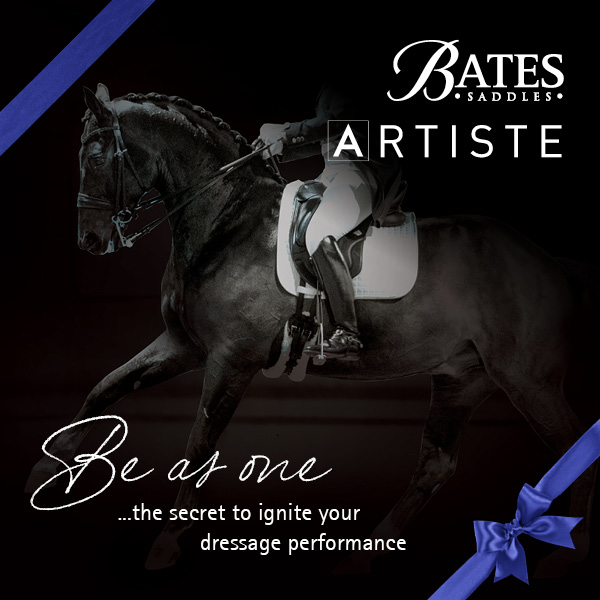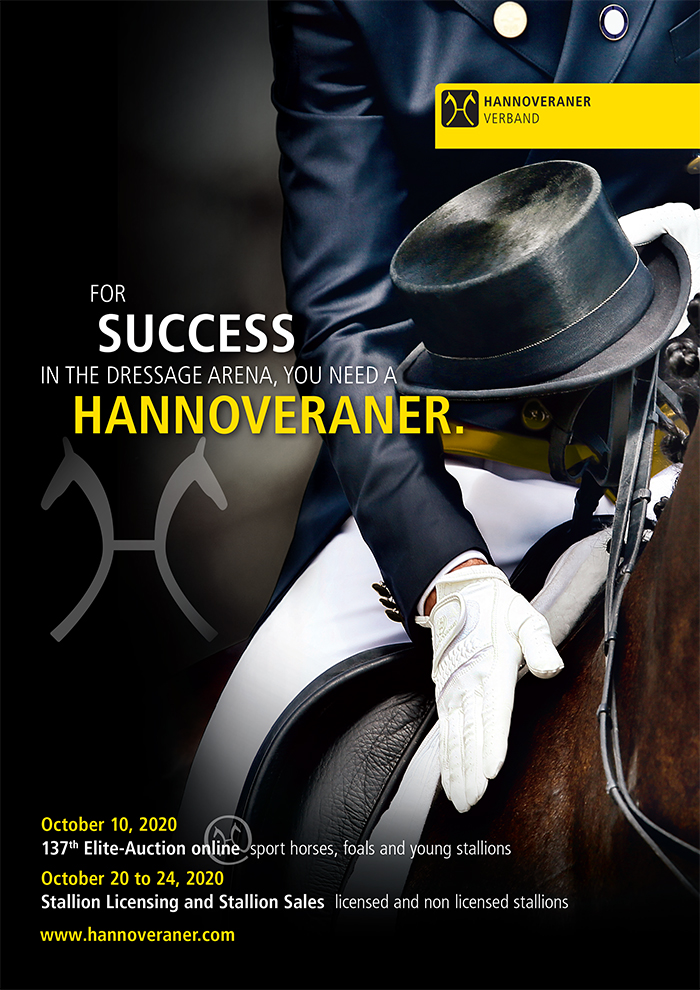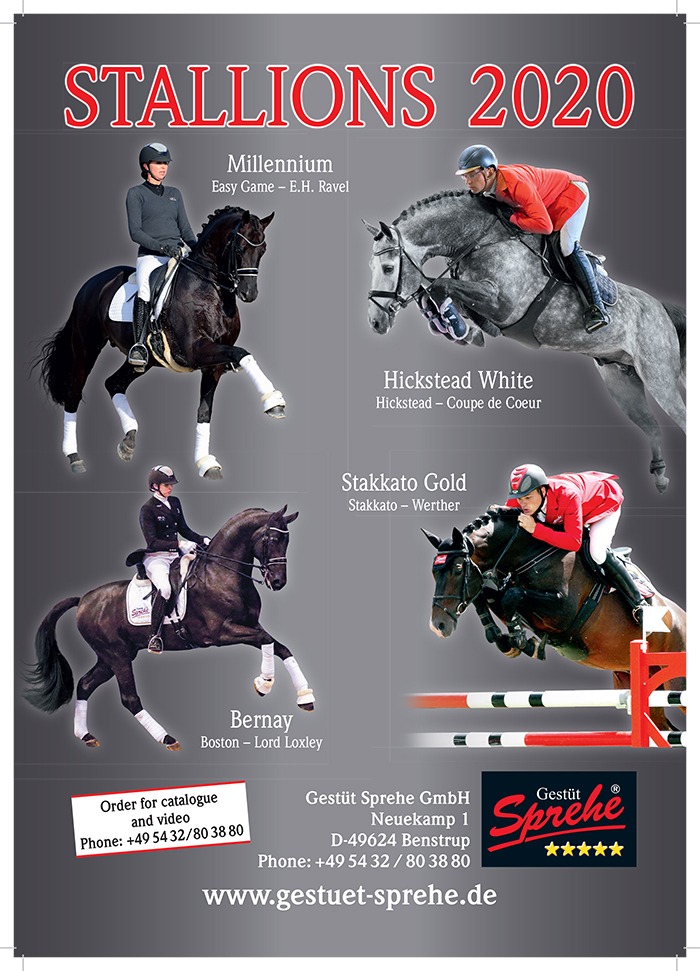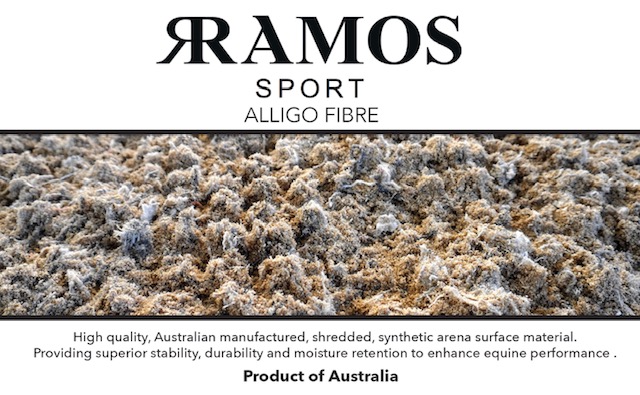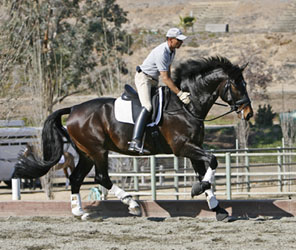There are some instructors who have that rare ability to communicate on a higher level with their students, instructors like Steffen Peters. Sit in on this clinic conducted a decade ago…
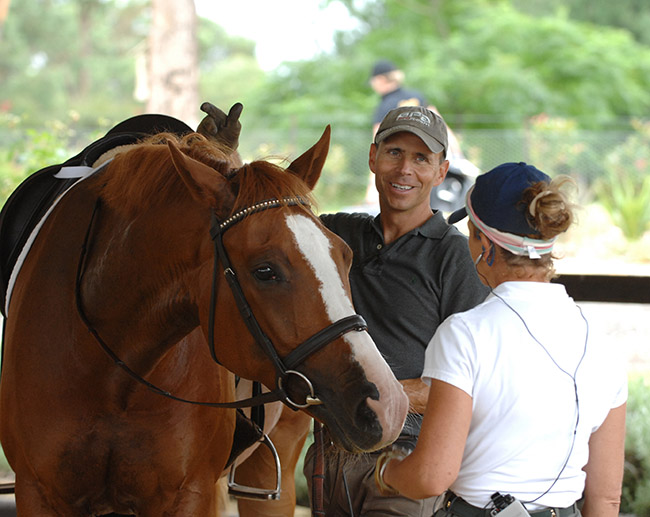
The baby of the clinic was Glennis Barrey’s GB William, who is a frozen semen product, by Weltmeyer out of Saffron, the Trakehner mare, Glennis campaigned.
The chestnut gelding has had an interrupted couple of months, he was badly affected by Equine Influenza and he has just come back in work – and is a bit full of himself…
Steffen is calming: “If he throws a fit, just keep going. If he picks up the other canter lead, just keep going. Do lots of rising trot, reinforcing him being in front of the leg. Take care of his mind, and his body will follow. Increase the contact slowly, give slowly. At this point it is all about truly accepting the bit and yielding to the contact. A steady hand doesn’t have to be a stubborn hand.”
“Perhaps for his body you’d say a stretching trot would be a good idea, but not for his brain at this stage. When he throws a fit, keep working instead of getting into an argument – sometimes they prefer to have an argument. If he wants to be silly in walk / halt, turn sideways into a circle.”
And at the end of the session, the pair were working so much better, and Glennis was wrapt in Steffen’s help…
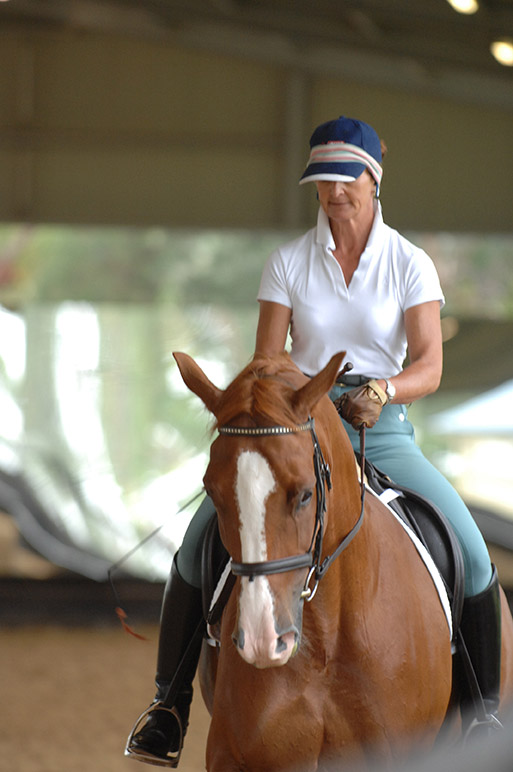
“There’s no corners to hide in from Steffen! He was so good at reinforcing how important the connection is. I guess I was using deep and round because I thought it was safe and convenient, but actually it’s not – he’s a lot better when he is up. I guess I was never brave enough to put him in that frame, I always tried to follow what we’d been drawn into thinking – deep and round with the young horses is better. I only ever put him up for competitions or test stuff. But it is exactly what Steffen said, he’s learned to escape, to avoid being in the place I need him to be. So whenever it gets to a spot where it is difficult and I really need him in my hand, from behind, he knows where to go to escape. But it’s not a real escape, it’s actually harder for him because he’s not in the right balance, and he’s not in the right control, it actually works to his detriment.”
“It was very interesting to be allowed to do things wrong, but also given the chance to see it come better, and when it went really really wrong, to have a solution, not ‘you did it wrong, he’s not up to that’ – there was always a solution.”
“I’ve been to quite a few people for lessons in my time, but to me, Steffen is the best coach I’ve been to. Bimbo, I’ll give him credit for the rideability of his horses after he had ridden them, but Steffen has made it better for the riders to ride their horses. He’s almost pushed us to make mistakes, so we are game enough to go outside the square and to let other ideas come into our head…”
“Sometimes you’ll get into a half pass and you will think, ‘Oh look, I am so close to getting this, I could just keep going and make it’, but the half pass isn’t the problem, it’s the horse, it’s the connection – that was the theme the whole way through his lessons, the horse has to be in the best position and the best carriage and the best suppleness, then he will do the work. And always go back to the work, always fringe on it, but don’t try to make it better in the work, go away from it and come back to it when the horse is right. That’s the biggest thing, the horse has to be expandable, and contractible – to the end of extension and the end of collection, however much that horse is capable of at that level.”
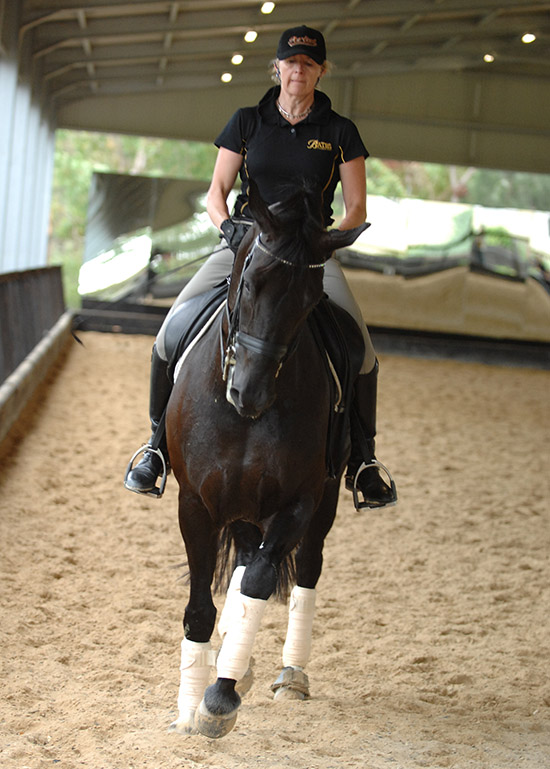
From the baby to the established superstar, the 14 year old Donnerhall mare, Donna Carrera, ridden by Rozzie Ryan, and now into her second year of Grand Prix, and selected to represent Australia at the World Cup Final in s’Hertogenbosch. I guess it was the transformation of Donna that was the most amazing aspect of Steffen’s work…
Now Donna has always had a bit of a problem with her half pass. Steffen set about tackling the problem in the subtle, quietly effective way I hope you are now anticipating.
more follows
“Start with the walk pirouettes, start with walk half pass. Make a difference with your legs, release, and get the bend again. If the sideways movements are difficult, teach them in the walk. Don’t accept that you have to push every stride, never let them think they can get numb to your legs.”
“On the left pirouette, she gets tight on the right rein, so I would not keep flexing her to the left.
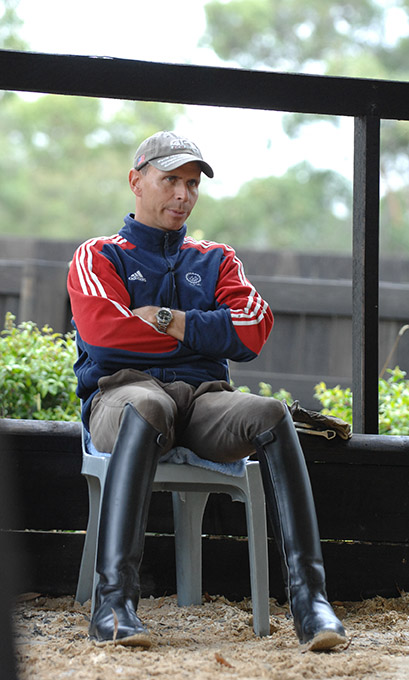
As in all the other lessons, Steffen kept coming back to the issue of contact:
“Don’t let her trick you into too much contact. Bring her back in a half halt, then have just the weight of the rein in your hand. Put together your hand and your legs to create the reason for her to let go of the rein.”
And it was the same in canter:
“She tricks you into too much contact, the same as in trot. Get her back on her hind legs and then release. If you take contact fine, but a playful contact not a rigid contact. Never accept a rigid contact no matter what you do – in the warmup, in the work, don’t accept it. Engagement and suppleness are equally important… better, now see if you can take that into trot.”
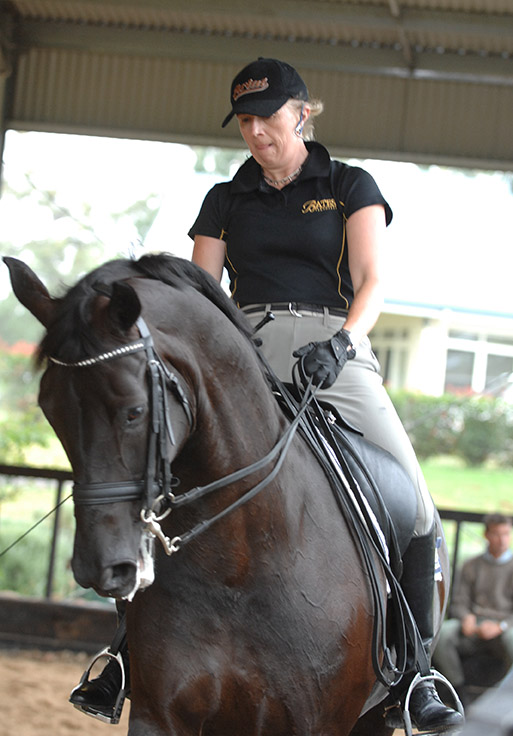
“Never accept engagement without suppleness, never accept expression without suppleness. They need to be independent at this level, on the aids and getting the job done. Momentarily the amount of contact you have is okay, but make sure you don’t have to work backwards with your hand.”
“A little squeeze of the rein without working backwards, and soft where you can be. It’s okay to squeeze with your hand but release after that – a playful contact not a stubborn hand. Always giving is your best friend, an allowing, manageable contact. People don’t have to see, squeeze a sponge with your left hand, squeeze a sponge in your right hand. Get her rounder in the poll, not lower in the neck. School it, a playful contact, teach her to chew the bit and loosen through her body. Don’t confuse this with see-sawing, just playing a tiny bit left / right. The sensitivity and suppleness is primary, collection is secondary. There must always be a forward tendency, no matter how much you shorten, no matter how much you collect. Increase the engagement and activity but keep her away from your hands.”
Certainly the trot is looking better, bigger, more scopey, less artificial…
more canter work follows
And in the canter again:
“Do a couple of half passes, and you decide if you have a manageable contact that you want to take into a test. It is always what you can manage rather than perfect collection. School like this in the canter and the trot half passes will improve. In walk and canter, you can improve your trot half passes.”
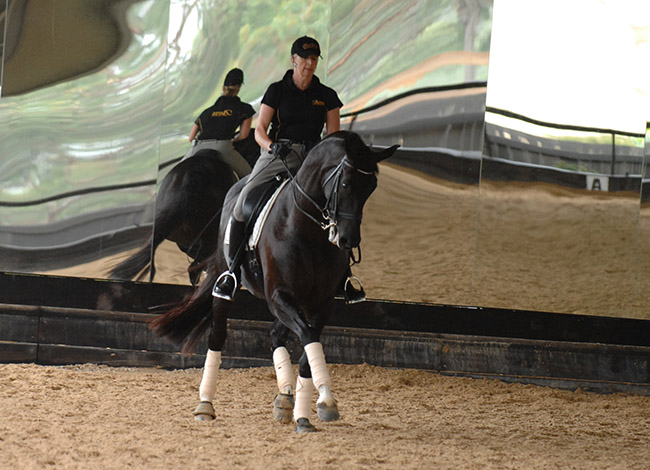
“In the half pass, think about cadence, ride it a bit in passage – you wouldn’t do it like that in a test – but it can help the cadence. When you ride half pass, remind her, don’t start holding every stride. That half pass got way too strong, you have to make your point but she tricked you into holding. You are riding too much every stride – tell her what you want, then leave her alone. Not so much sideways, more cadence, let it sink in so she knows cadence is an option – then ride the half pass in border line medium trot in the test! Just school it in passage, and go medium in the test… that’s what Isabel Werth does with Satchmo.”
It was time to work on the pirouettes, and another of Steffen’s subtle distinctions emerges, the one between schooling and repeating: “Make a difference in the pirouette. Don’t repeat it, school it. Don’t hold the pressure too long on the rein or the leg. It’s okay to build up pressure, but ask them to do the movement on the lightest aid. I don’t care if she makes a mistake as long as you school the movement. Think about an exit strategy in the pirouette, you be in charge so you can decide when to get out of it…”
“If the energy isn’t there for a full pirouette, do a quarter pirouette. In pirouette and piaffe, you must always feel the energy. If you have to help her through a pirouette, don’t do it. If they drop a tiny bit behind us in the training, it will be 20% in the test because there we can’t correct it.”
Working on the piaffe, was more of the same:
“She does everything, just make sure she does not trick you into supporting her. No compromises. It’s tough to make piaffe perfect, but you can make the self-carriage perfect. It is okay for you to hold but make sure she responds, and you give.”
“Whatever you start, follow through. If you push in the walk and she doesn’t go – trot – tell her. Always be thinking about sensitivity to your leg, and suppleness. Never accept a movement without energy – create energy but make it with suppleness. If she loses the suppleness in her back, go to rising trot, activity can only happen when she is supple enough. Any day when I ride my horses, and the contact is not right, the suppleness is not right, that’s when mistakes creep in. If you are holding a hot horse, then you get tension, if you are holding a cold horse, the brakes are on.”
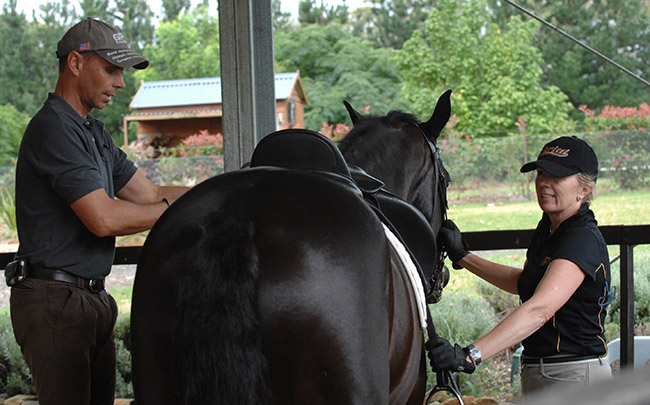
At this point Steffen said something about riding Donna and Rozzie practically fell off so anxious was she to hit the ground and hand over the reins. You can talk all day, but horses don’t let you lie – what Steffen did with Donna was truly amazing. He got her longer, softer, yes, more supple, and swinging across those trot half passes in great style.
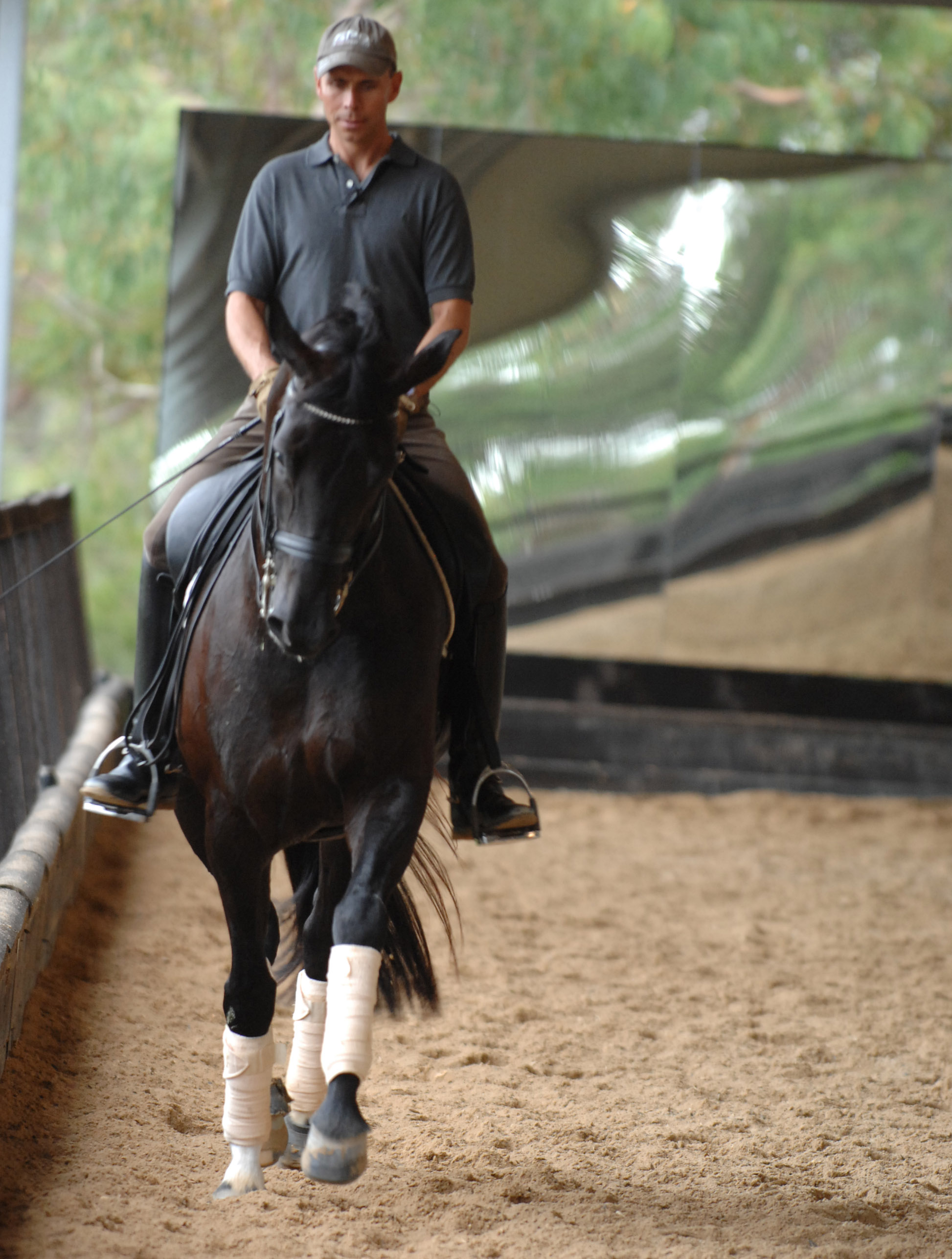
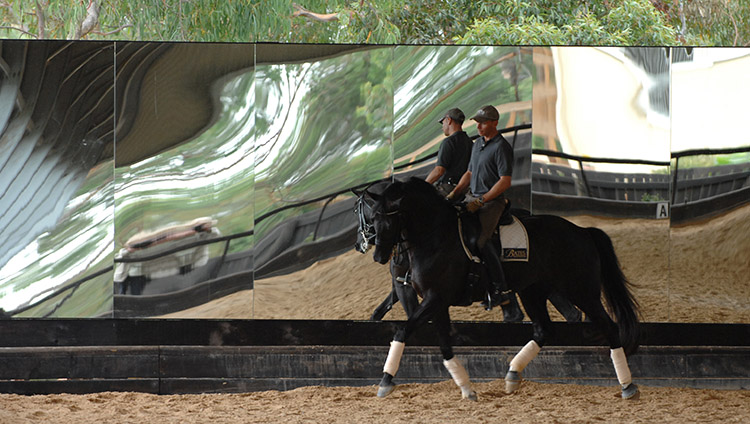
It was an awesome show…
read on below
Back on board, Rozzie goes to walk and once again finds that Steffen is demanding finely tuned aids: “Use longer aids, don’t give her three little kicks. Don’t compromise – there must always be a clear answer to every aid.”
“The biggest hurdle to riding a Grand Prix test, is to ride it like you ride at home. The first time you come into the arena at an international show, you grip – do the movement how you want it in the test, when she’s on the proper aids.”
In the flying changes, the emphasis was on straightness: “If she does the first couple of changes behind your leg, stop doing them, send her forward, otherwise she tricks you into taking your leg back, she tricks you into strong aids and naturally, you push the hind end sideways and the changes are crooked. Get her used to light aids and straight changes. Look up, look at the mirror – we always seem to find something interesting in the wither or the mane to look at. If your leg has to go too far back, you are giving a lateral aids, not a changing aid. Your outside leg should be barely behind the inner leg, they will make mistakes that way, but then when you get the changes they will be straight…”
Rozzie leaves the session with a great big smile on her face, humming something that sounded suspiciously like ‘California here I come…’
“Brilliant – that’s the best word to describe it,” Rozzie enthused after she’d tucked Donna away, “I think having somebody who is completely in tune, not just with international competition but training horses every single day, who is a rider as well – we’re unbelievably lucky. The changes that are being made are so subtle, so intense.”
But not pressured…
“Not pressured on the horse, sympathetic to the horse, but at the same time demanding a very correct response, not just from the horse, but also from the rider. It’s intense pressure to be intellectually active whilst you are riding, and to be so concentrated, so aware of every single movement you make, and every single reaction to that movement. Being completely aware of every action and reaction – it is something that you think you are aware of, but this is bringing a greater awareness to it. It’s like having somebody who is an artist – as opposed to just going through what should be done. It’s completely realistic to every single second the rider is on the horse and the reaction the horse makes. It’s absolutely in the moment, and it is very interesting to have comment on the slightest action you make…”
And the use of the concept ‘supple’ all the way through, he keeps saying I don’t care if you’ve got engagement, or collection, if you’ve lost the suppleness it’s not worth anything…
“It’s putting everything together, putting the suppleness, the activity, the collection, and then the reaction all together. Sure it’s something we talk about, and you might think that you are doing, but this is just taken to another level. It’s fascinating.”
Do you think you can use it now – or do you need someone like him to keep reinforcing the message?
“In the perfect world you’d have someone picking you up on every single reaction that you make, that would be wonderful, but the reality is that most of us have to go home now and try to incorporate it into what we are doing anyway. It makes you doubly conscious of every moment you have in a lesson with Steffen…”
“When Steffen rode Donna, the feel when I got back on was very subtle, it was like somebody had got something that was a little bit rusty and put some oil on it, the feel was beautiful. I’m searching for that feel the whole time, it’s searching for a minute, elusive feel – and that’s good because at the end I felt that her left half pass, which I find really difficult, and which he made look really good – I felt much better when I rode it. So I’ll be searching for that feel all the time…”
Two or three days is good, but I’m wondering if something like 14 days, doing it every day, that your chance of internalising that discipline would be much higher?
“Of course, you get good at what you practice but it’s just not going to happen, but what will happen is that I will be searching for this every day when I ride, especially with Donna who I am getting to know pretty well – and who actually demonstrates what he wanted pretty well. Occasionally, before he even said anything, I was going ‘no, I haven’t got this enough’, then you want to slap yourself around your face and say ‘come on! What are you doing…! You should know it by now.’ It’s so valuable having someone who is aware of these levels, levels above and beyond what you normally search for.”
But it’s the same old German Principles, nothing different, nothing gimmicky…
“That is the difference though, if you could learn it out of a book, or learn it because we all think that we know it, then everybody would be a fantastic Grand Prix rider, but the difference is in those tiny fine levels that you are not sufficiently aware of.”
Doing the tiny things perfectly… and they are all things that you can do, have done, but it’s making sure you do them exactly at the right moment…
“Even if it was just knowing that, I think you would be able to do it, the thing is turning into a reflex that is difficult. And you are dealing with an animal, not a machine, you don’t always necessarily get the same reaction, otherwise you would see Grand Prix tests with no mistakes from everybody.”
For more of Steffen Peters:
http://www.horsemagazine.com/thm/whos-who/peters-steffen/
ADVERTISEMENT
Want to breed a top dressage horse? There’s a range of best stallions in Europe available at International Horse Breeders – stallions like Foundation – you will find one to suit your mare – www.ihb.com.au
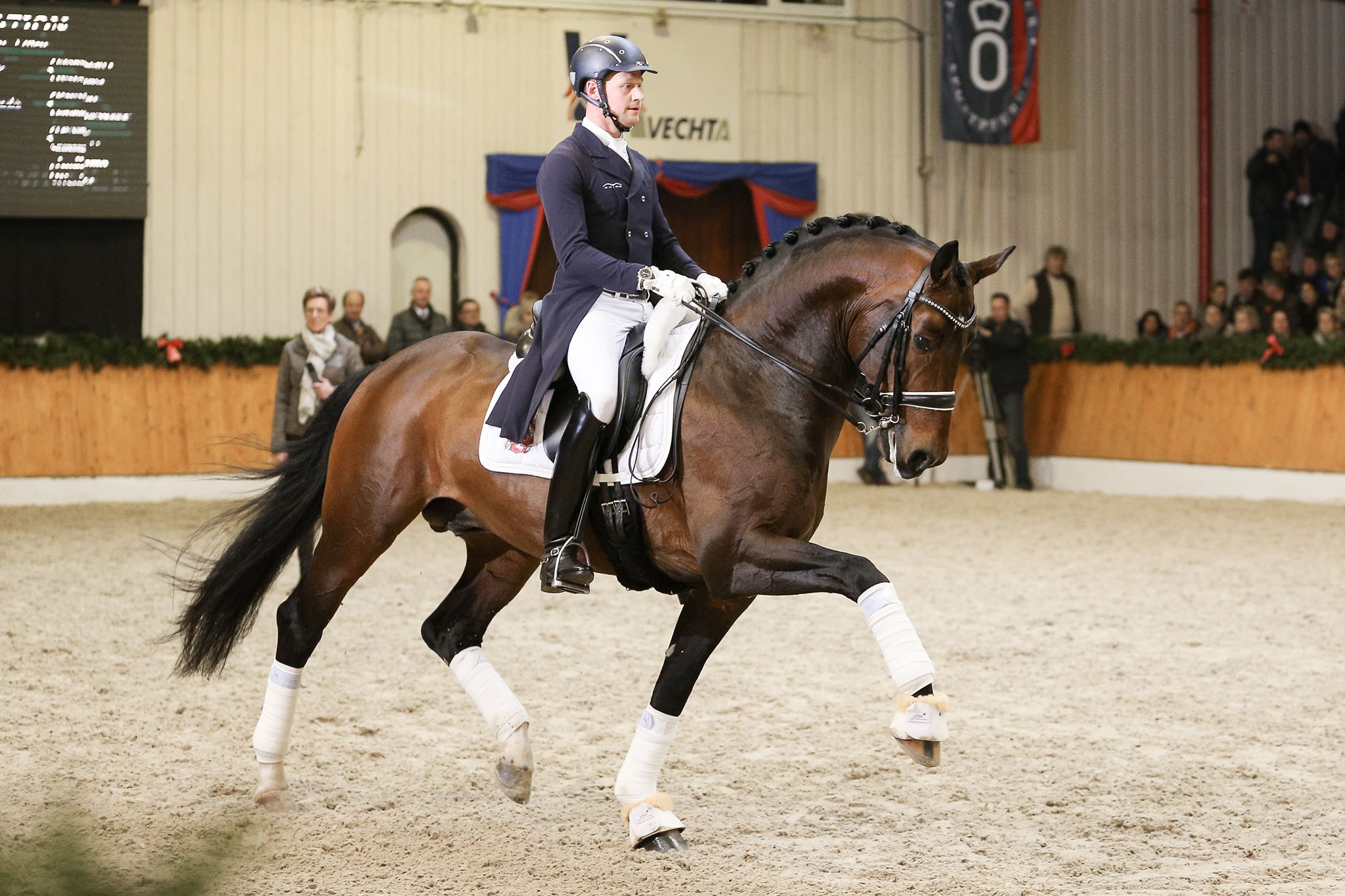
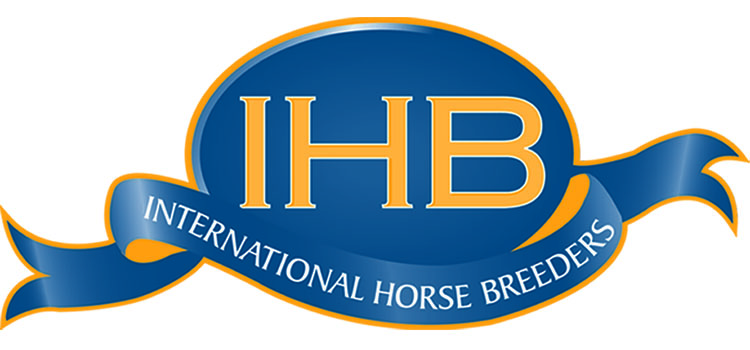
Steffen and Ravel / Photo: Kenneth Braddick
Steffen – life and times
“So far I’ve had a number of international horses, aside from Udon, there’s Grandeur, who did the World Cup in 2002, Floriano who went to the World Cup and the WEG… I’ve got several horses in contention for Hong Kong. Lombardy won the National Championships last year, he competed in Aachen last year, and did quite well. He’s the most experienced horse. Then there are two other horses. There’s Ravel, and Prince. Ravel is the most fascinating horse I’ve had, it’s green, it’s the first season Grand Prix, he has the mind for it. He’s such a fantastic horse, we decided we’d only take him out to competition when it was really good. He was ready in the Fall of last year, but we decided, he needs to be presented when it is good enough to get 70-72%. My money is on him at this point. It’s nice to have three horses that could make it but I am very realistic about it. There’s many riders who have had three horses and they still don’t make it.”
What does your set-up in the United States look like – a big barn?
“Yes, it’s a big barn with 57 horses but we share it with a jumper trainer, and he has 25 horses. There’s four of us who ride in the dressage part. My wife, two bereiters from Germany.”
You do a little work with some of the other US Team members – Debbie McDonald told me that when she couldn’t get to Klaus, she got you to help her…
“Yes, we work together, and Courtney King – we’ve been working together for the past three years. I go regularly to the East Coast, and she comes to our place – she’ll be there before the final selection trials with five horses. It’s fun to get the other riders involved. Obviously in the show arena it is serious competition, but outside of it, there’s a lot of camaraderie, we support each other.”
Do you find you have to go back to Germany every now and then to tune up?
“I do, because of the standard of the competition. You can watch videos but when you are right there – especially at Aachen – and you see at what level they are riding, it helps me keep the standard where it needs to be.”
How strong is dressage in America?
“At the moment there’s a change in the generation of horses. Gunter Siedel was always a strong team member with Aragon – now that horse is retired. Brentina, I personally think she will come back because Debbie is extremely good at managing horses. They took it extremely easy after a few injuries and I could see that she could come back for the summer. Courtney has a nice young horse – Mythilus – who was very well received in Europe. Then I’m hoping that one of my three horses could be a supporting team horse.”
Do you think you still operate on Jo Hinnemann’s training philosophy?
“I’ve been lucky that I started with Jo on the international scene. Then Harry Boldt was our coach, Klaus was certainly influential but the biggest teachers were always the different horses, and not just at the Grand Prix level, from colder horses to hot horses to spooky ones… difficult temperaments, and those have always been the biggest teachers. Obviously 50% from the people I have mentioned but the other half I learnt from the horses.”

